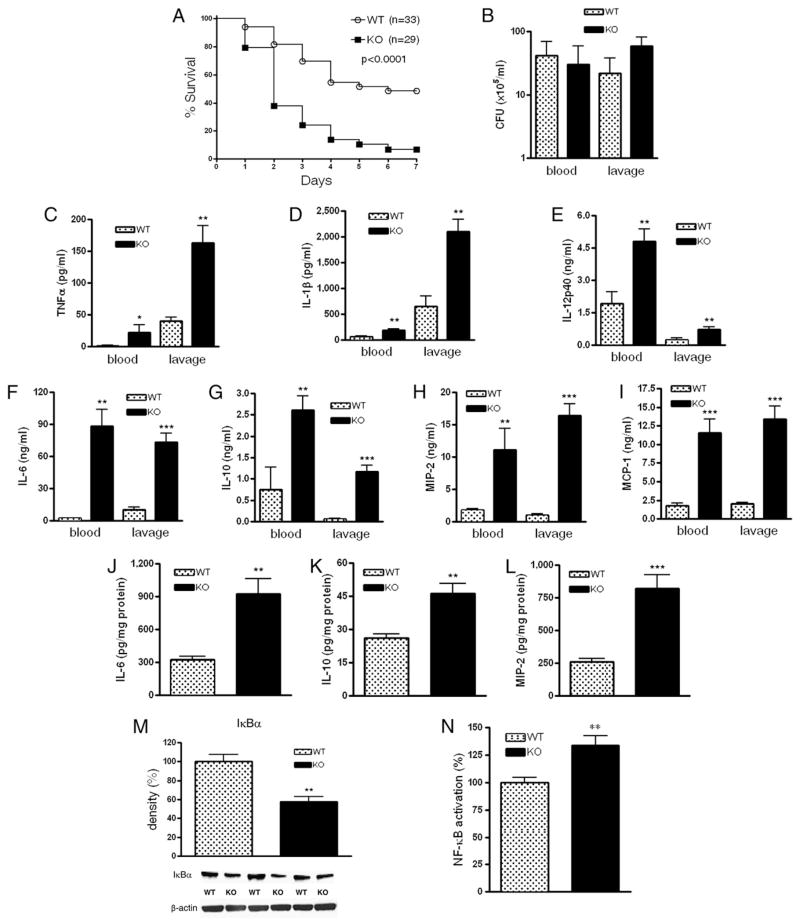FIGURE 1.
A2B deficiency decreases survival and increases inflammation in polymicrobial sepsis. A, Surviving A2B KO and WT mice were counted every day for 7 d after inducing polymicrobial sepsis by way of CLP. WT, n = 33; KO, n = 29. p < 0.0001 versus WT. B, Blood and peritoneal lavage fluid obtained from A2B KO or WT mice 16 h post CLP were cultured on soytrypticase agar plates, and the number of bacterial colonies was counted (n = 12 mice per group). Serum and peritoneal lavage TNF-α (C), IL-1β (D), IL-12p40 (E), IL-6 (F), IL-10 (G), MIP-2 (H), and MCP-1 (I) levels were determined from samples collected 16 h post CLP using ELISA(n = 12/group). Splenic levels ofIL-6 (J), IL-10 (K), and MIP-2(L)weremeasured from protein extracts of spleens of A2B KOand WT mice (n = 12/group). M, IκBα levels were assessed using Western blotting of spleen protein extracts of A2B WTand KO mice (n = 6/group). Protein extracts were generated from spleen taken 16 h after sepsis induction. Bands were detected by ECL. All results (mean ± SEM) shown are representative of three experiments. N, p65 levels were assessed in nuclear fractions of spleens using NF-κB (p65) chemiluminescence assay kit. Results (mean ± SEM) shown are the summary of three independent experiments. WT, n = 29; KO, n = 31. *p < 0.05 versus WT; **p < 0.01 versus WT; ***p < 0.001 versus WT.

